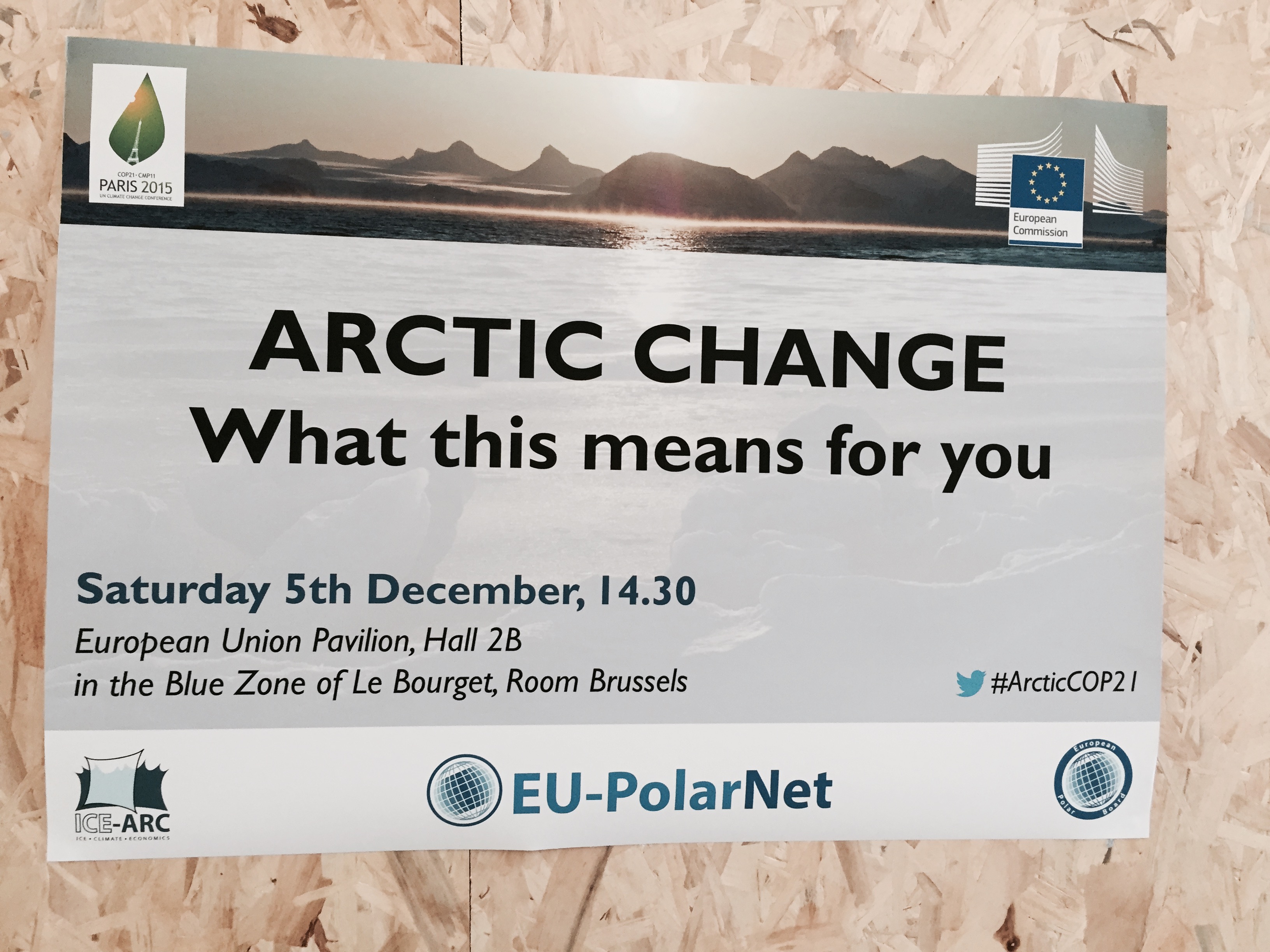Leverage Point #3: The goals of the system
It goes without saying that the Arctic is on the front lines of climate change: both in that physical changes are happening rapidly in this region, but also that communities in the region are in need of immediate adaptation. In such a way, I consider the Arctic to be a microcosm of the mitigation and adaptation required in order to adequately address climate change.
My main research interests for this project focus on both the international and UNFCCC realm, and the Arctic and Arctic Council. Of course, this meant I would be interested in seeing how the Arctic would be represented at the UNFCCC.
Three different events caught my attention:
Side events telling us how bad Arctic climate change will be
When I scoured the extensive UNFCCC side events list for anything Arctic related, I only found examples of events such as these that chronicled the Arctic ‘unravelling’ in a pretty cookie cutter way (if you came across events that took a different angle, please let me know). These events highlighted that the Arctic is changing faster than other regions, and that Arctic communities are already needing to relocate and adapt to significant changes in climate – essentially, according to a State Department event, that “what happens in the Arctic doesn’t stay in the Arctic”.
To my knowledge, however, no events seemed to focus on solutions to these problems, or on what action would be required at COP21 to avert the most significant damage to these communities.
Aurora, Greenpeace’s polar bear (and all polar bears, really)
The polar bear seems to remain alive and well as the climate change poster child! Despite the fact that the Arctic is home to a wide diversity of communities and people, it was represented at COP21 by Greenpeace’s gigantic polar bear, Aurora. A larger-than-life, moving, roaring machine, Aurora was brought to COP21 to “roar for billions of people”, including frontline communities, according to Greenpeace.
Despite these good intentions, I heard concerns from northern youth organizers that Aurora didn’t represent them. In my experience on Arctic issues, I’m inclined to agree: using polar bears as a symbol for the Arctic robs the people who live there of their own identity, and continues to promote the false belief that the Arctic is a barren place devoid of any life except for charismatic polar bears.
Furthermore, it is incredibly frustrating to hear that Arctic youth can’t be brought to high-level international negotiations – decision-making events that directly impact their futures – because of the high cost of bringing them from the Arctic, only to have money needlessly spent to ship mechanical polar bears or to build a replica Eiffel Tower in the conference hall.
IceWatchParis
This mesmerizing art piece was one of my favourite things about COP21. Twelve chunks of ice were brought from Nuuk, Greenland, to Paris, and placed in front of the Pantheon as they slowly melted. The chunks were an interactive art exhibit, giving people the opportunity to touch ice and play with ice, and hear the sound of water dripping as it slowly melted. Up close, trapped air bubbles could be visible, as well as cracks:
Most of the people I saw in the square touched the ice and walked around different pieces to get a better idea of what made each chunk unique. Others tried (unsuccessfully) to sit on the pieces, or kick them.
It was an odd sight for me, seeing this ice not on a Greenlandic glacier, but in the middle of a square surrounded by traffic and honking cars. But, I think this art project served a worthy goal: bringing the Arctic home to those who may have never experienced it. The chunks of ice were so massive, so immovable at first – they were imposing, even in front of a building as imposing as the Pantheon.






Thank you for this post. Good luck for next article